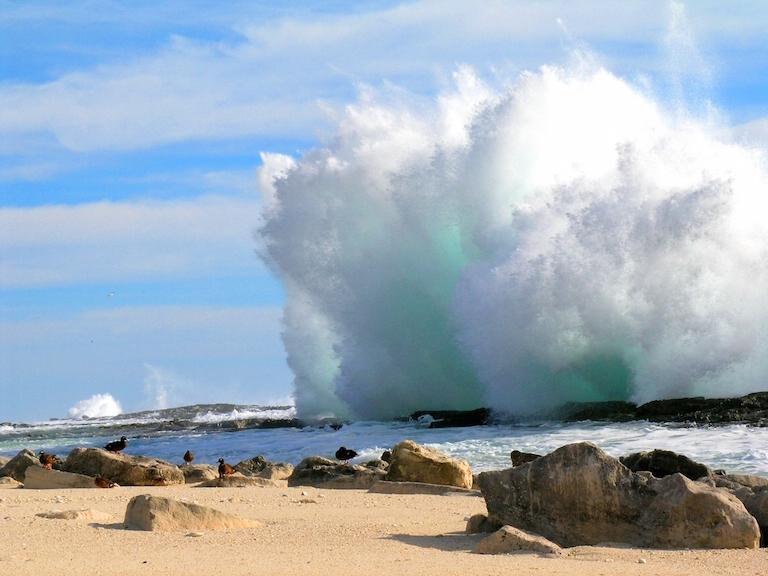News | February 29, 2016
3,000-year sea level study called a major advance

A wave breaks on a Hawaiian beach. Sea levels driven higher by global climate change account for two thirds of coastal flooding days in the United States since 1950, a new analysis shows. Image credit: Michele Reynolds, USGS
A newly published analysis of the sea level record spanning three millennia represents a major leap forward in climate science, says Dr. Josh Willis, an ocean, ice and climate researcher at NASA’s Jet Propulsion Laboratory who was not involved in the study.
The first-of-its-kind study, published online in Proceedings of the National Academy of Sciences (PNAS) on Feb. 22, applied a sophisticated statistical analysis to local relative sea-level reconstructions from around the globe. Using published proxy measurements for 24 locations that relied mainly on marine organisms, the study’s authors found that the rate of globally-averaged sea level (GSL) rise during the 20th century was significantly higher than at any time in the past 2,800 years. The researchers also found that if human influence on climate were removed from the record, global sea level either would have risen far more slowly or even fallen slightly.
“With this record we can definitively say that modern sea level rise is caused by global warming,” said Willis, project scientist for the recently launched Jason-3 satellite that measures sea-surface height. “That’s something we kind of already knew, but this paper puts the nail in the coffin.”
Willis also praised a second analysis by a research group, Climate Central, released the same day and based on the first study’s findings. It ascribes two thirds of coastal flooding in the United States since 1950 to human-caused sea level rise.
“A 100-year flood in San Francisco now happens every 10 years,” Willis said. “That is global warming, and that is undeniable.”
The analysis that made these conclusions possible was based on extremely accurate records of regional sea level changes. Many of the published studies the authors drew from included coastal marine organisms that live only in a narrow range of tidal elevations; their presence is a reliable indicator of specific sea-surface heights.
“There are lots of records that go back thousands of years,” Willis said. “But usually you don’t have as good an accuracy as these guys got.”
The research team that performed the analysis, led by Robert E. Kopp of Rutgers University, supplemented their global database of regional relative sea-level reconstructions with 66 tide gauge records, one going as far back as 1700. The authors found that GSL barely rose (0.1 ± 0.1 millimeters per year, essentially zero) between 0–700 CE, was nearly stable between 700 and 1000, and fell by 0.2 ± 0.2 millimeters per year between 1000–1400 CE, a period of global air cooling by ∼0.2 °C. They noted a strong acceleration that began in the 19th century and yielded a 20th century rise of 13.8±1.5 centimeters, which is faster than during any of the previous 27 centuries. Prompted by the observed correlation between GSL and air temperatures, the authors also used a semi-empirical model (a simple relationship between GSL and global air temperature) calibrated against the GSL reconstruction, which shows that in the absence of anthropogenic warming, it is extremely likely that 20th century GSL would have risen by less than 51% of the observed 13.8±1.5 centimeters.
The study further used semi-empirical modeling to project sea level rise by the end of the 21st century under a variety of greenhouse-gas emission scenarios. And the authors’ findings—52 to 131 centimeters of sea level rise on the high end, 24 to 61 centimeters if emissions are drastically reduced—were closer to the conclusions reached in the most recent assessment by the Intergovernmental Panel on Climate Change than to the results from previously published semi-empirical projections.
“The short answer is that since the time of Christ, there is not much going on until the Industrial Revolution,” Willis said. “And now, sea level is rising like gangbusters.”


